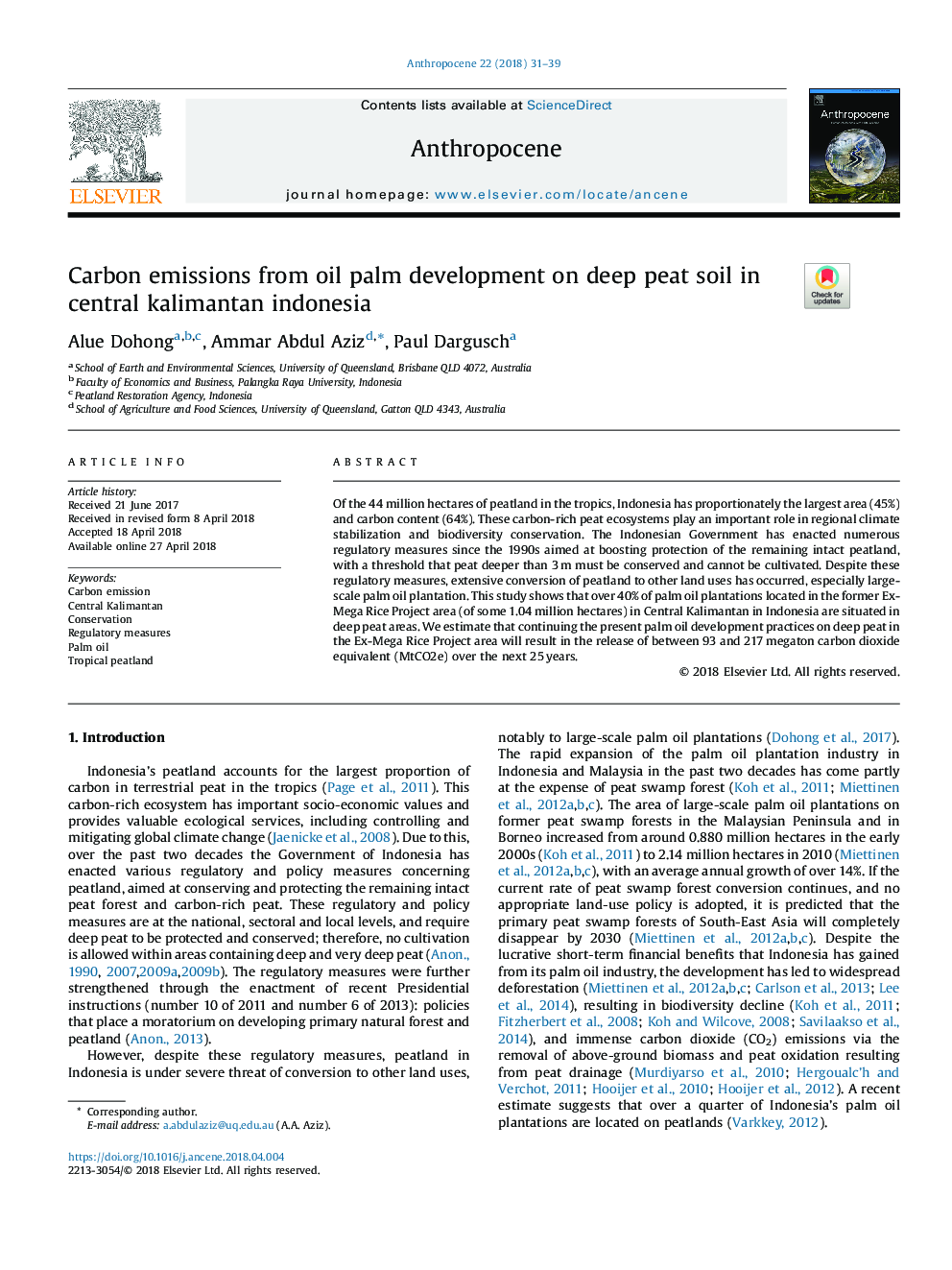| Article ID | Journal | Published Year | Pages | File Type |
|---|---|---|---|---|
| 8867168 | Anthropocene | 2018 | 9 Pages |
Abstract
Of the 44 million hectares of peatland in the tropics, Indonesia has proportionately the largest area (45%) and carbon content (64%). These carbon-rich peat ecosystems play an important role in regional climate stabilization and biodiversity conservation. The Indonesian Government has enacted numerous regulatory measures since the 1990s aimed at boosting protection of the remaining intact peatland, with a threshold that peat deeper than 3â¯m must be conserved and cannot be cultivated. Despite these regulatory measures, extensive conversion of peatland to other land uses has occurred, especially large-scale palm oil plantation. This study shows that over 40% of palm oil plantations located in the former Ex-Mega Rice Project area (of some 1.04 million hectares) in Central Kalimantan in Indonesia are situated in deep peat areas. We estimate that continuing the present palm oil development practices on deep peat in the Ex-Mega Rice Project area will result in the release of between 93 and 217 megaton carbon dioxide equivalent (MtCO2e) over the next 25â¯years.
Related Topics
Physical Sciences and Engineering
Earth and Planetary Sciences
Atmospheric Science
Authors
Alue Dohong, Ammar Abdul Aziz, Paul Dargusch,
